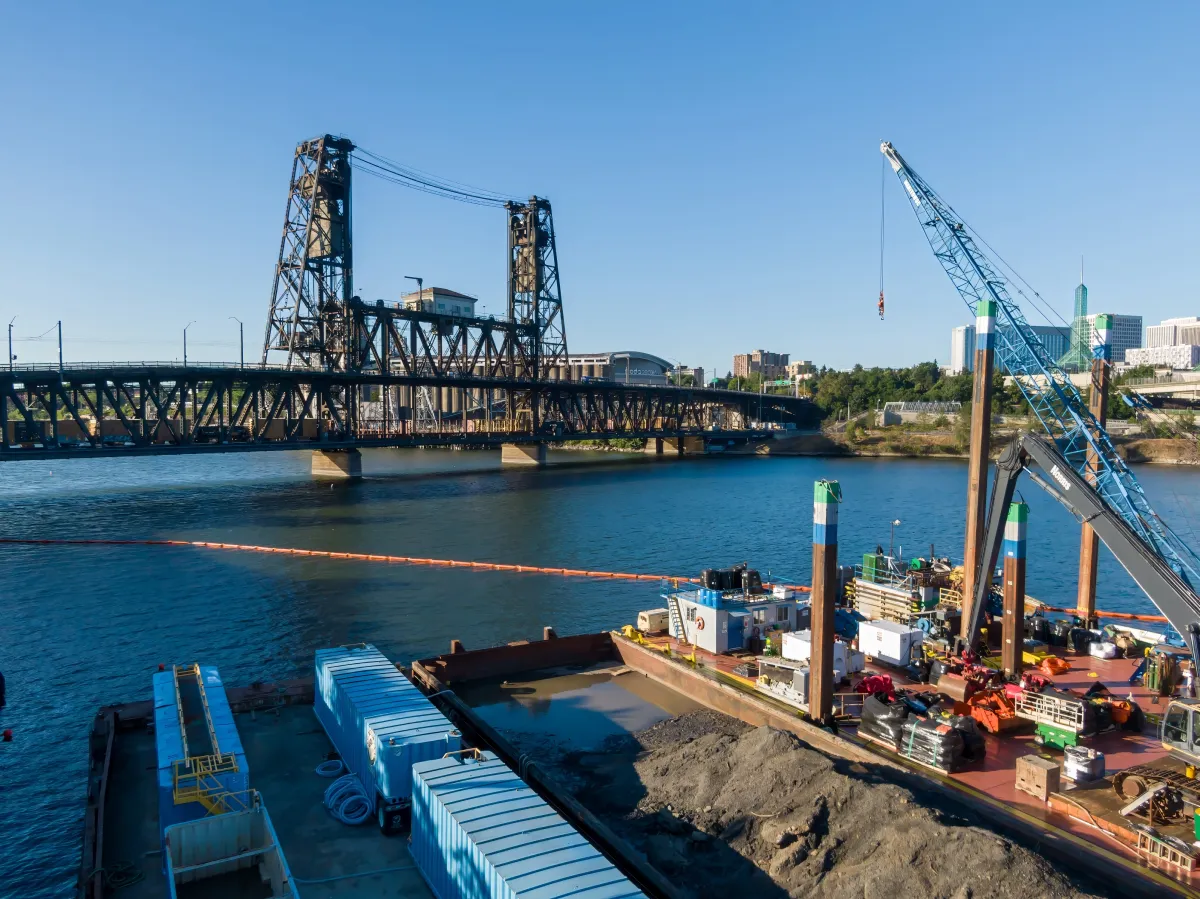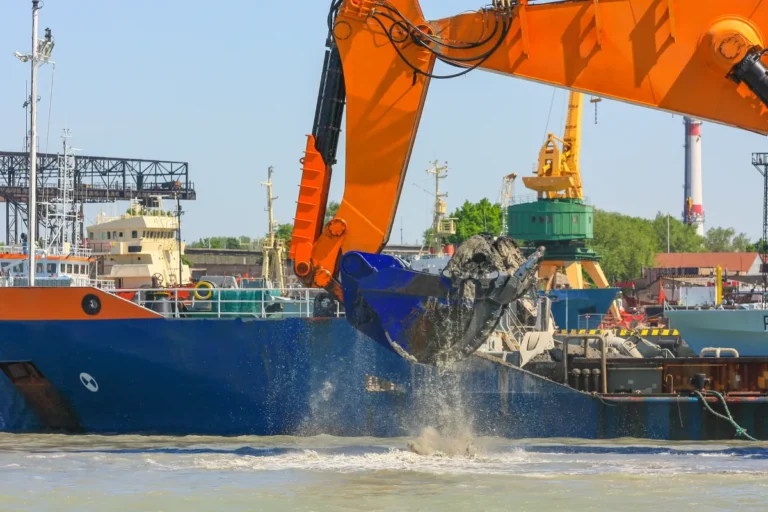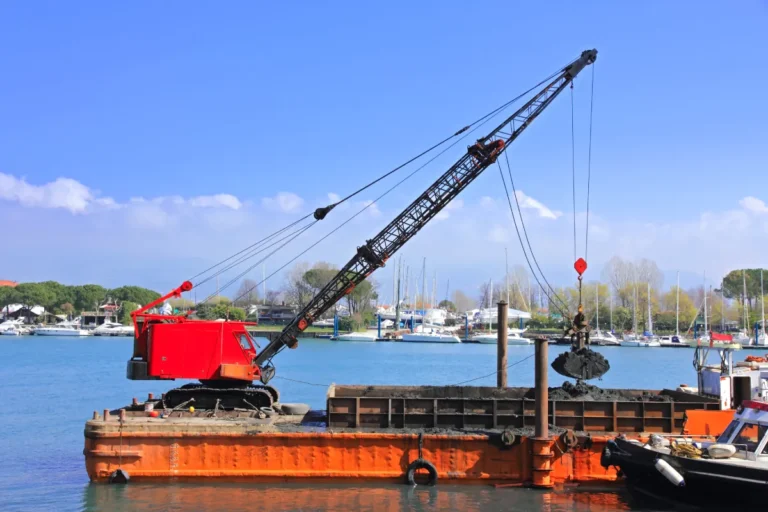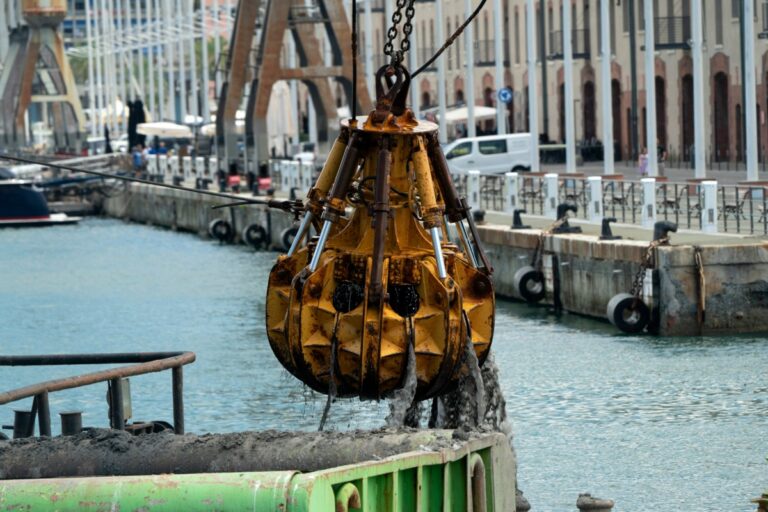Industrial dredging is a critical operation across construction, mining, and infrastructure projects where large volumes of sediment, slurry, or overburden must be efficiently removed and transported. For many businesses, renting high-performance dredging machines provides a practical alternative to ownership, delivering the power, precision, and reliability required for demanding job sites without the capital investment or long-term maintenance burden. This guide examines the fundamental aspects of industrial dredge rental, including machine types, site requirements, pricing models, and how to choose the ideal rental partner to support your operational objectives.
Understanding Industrial Dredging: Not All Dredges Are Equal
Industrial dredging refers to the use of heavy-duty dredging equipment specifically engineered for large-scale operations such as construction site preparation, open-pit mining, aggregate processing, and tailings pond management. Unlike small-scale or environmental dredging—which typically targets low-volume sediment removal in lakes, lagoons, or wetlands—industrial dredging is focused on high-throughput material transfer, often under harsh conditions and demanding timelines.
In construction and mining operations, the materials commonly removed through industrial dredging include:
- Coarse gravel and sand from excavation and reclamation zones
- Overburden layers covering valuable mineral deposits
- Tailings and slurry from mineral processing operations
- Compacted sediment in stormwater basins, dewatering pits, or foundation zones
The equipment used for industrial dredging differs significantly from machines designed for environmental or maintenance dredging. Key distinctions include:
- High-flow, high-TDH (Total Dynamic Head) pumps capable of moving large volumes over long distances and variable elevations
- Abrasive-resistant components, such as hardened impellers and wear plates, are used to withstand the impact of coarse and dense materials
- 24/7 duty cycle readiness, allowing the dredge systems to operate continuously without overheating or accelerated wear
When Renting Makes More Sense Than Buying
Investing in a dredging machine is a significant capital decision, particularly for construction and mining operations, where project durations, site conditions, and material volumes can vary substantially. In many cases, industrial dredge rental offers a more practical and flexible alternative to equipment ownership—particularly for short-term, high-demand, or one-off dredging projects.
Renting allows companies to avoid the upfront capital expenditure associated with purchasing industrial-grade dredging machines while gaining access to the latest models designed for high-efficiency material transfer. This is especially valuable when projects require specialized dredge configurations or when operating conditions change between sites.
Key indicators that a dredging machine rental might be the better route include:
- Project duration is limited, seasonal, or unpredictable
- Need for high-capacity dredging without long-term equipment commitment
- Infrequent dredging operations that do not justify full-time ownership
- CapEx constraints in budgeting cycles, with preference for OpEx solutions
- Uncertain material profiles, requiring versatile dredge setups
In addition, dredge rentals often include ongoing maintenance support, training, and logistics assistance—reducing the burden on internal teams, for contractors, EPC firms, or mining companies seeking to scale operations without overcommitting to fixed assets, renting offers both operational agility and financial control.
Key Types of Dredging Machines Available for Rental
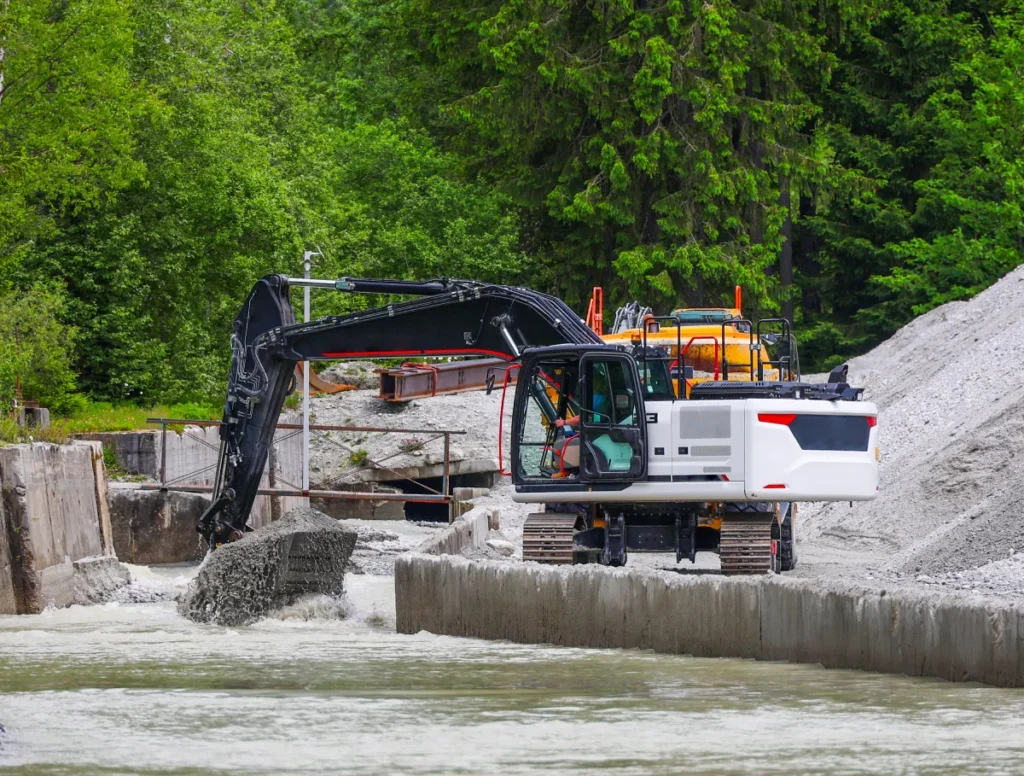
When exploring industrial dredge rental options, it’s important to understand the variety of dredging machines available and how each is suited to specific applications within construction and mining environments. From removing coarse overburden to reprocessing tailings, different dredge types are built with distinct capabilities to match the demands of each task.
Here are the most common types of dredging machines typically offered in rental fleets:
Hydraulic Dredge Pumps
Ideal for high-volume slurry movement through pipelines, especially in tailings management and foundation excavation.
- High GPM flow rates
- Handles abrasive and viscous materials
- Can be powered by diesel or electric motors
Cutterhead Dredges
Designed to agitate and break up compacted material before suction mechanically.
- Suitable for hard-packed sediment and clay
- Built-in cutter mechanism with replaceable teeth
- Common in site prep for marine and inland construction
Amphibious Dredges
Built for soft terrain and shallow or marshy areas where access is limited.
- Self-propelled on land and water
- Perfect for dewatering pits, storm basins, and wetland mining
- Compact design with high mobility
Remote Operated Submersible Dredges
Controlled from the surface and submerged directly into the dredge zone.
- Zero human exposure to hazardous zones
- High efficiency in deep or confined spaces
- Common in slurry pond dredging and underwater recovery
Each machine type varies in discharge capacity, deployment method, and compatibility with power sources or accessories. Rental providers may also offer modular configurations to suit unique site constraints or material types, giving operators greater control over performance. Matching the right dredging system to the job site is essential for efficiency, and these categories typically organize rental catalogs to simplify selection.
Industries and Applications that Benefit Most
Industrial dredge rental plays a crucial role across various sectors where large-scale material movement is necessary. Construction and mining are the primary drivers, but several other heavy industries also leverage dredging equipment rentals for project-specific demands, temporary capacity boosts, or compliance-driven sediment removal.
Here are the key industries where industrial dredging and dredging machine rental deliver high-value results:
Construction
Used for foundation excavation, trenching, site reclamation, and stormwater basin clearing. Dredging accelerates site preparation and supports the structural integrity of infrastructure projects.
Mining
Tailings pond management, slurry transport, and pit dewatering are major use cases. Rental dredges enable mines to scale their capacity during peak periods without incurring long-term equipment commitments.
Sand and Gravel Extraction
Operations that rely on consistent removal and processing of aggregates benefit from rental dredges with high throughput and abrasion resistance.
Hydropower and Dams
Reservoir dredging is crucial for maintaining flow capacity and effective sediment management. Rentals are helpful during periodic drawdowns or maintenance cycles.
Quarry Dewatering
Industrial dredges help drain excess water, allowing for uninterrupted blasting or excavation activities in quarries.
Ports and Marine Terminals
Temporary dredging is required for dock maintenance, berth deepening, or emergency shoaling situations. Rental solutions ensure fast mobilization.
Municipal Infrastructure
City-owned retention basins, canals, and wastewater lagoons often require periodic sediment removal. Rentals avoid idle public asset investment between cleanout cycles.
By offering access to high-performance equipment without ownership burdens, dredge rentals support a diverse range of industries that require dependable, heavy-duty sediment management solutions. The next step in maximizing project success is ensuring the site is fully prepared for the deployment of the dredge.
Site Readiness and Supporting Equipment Requirements
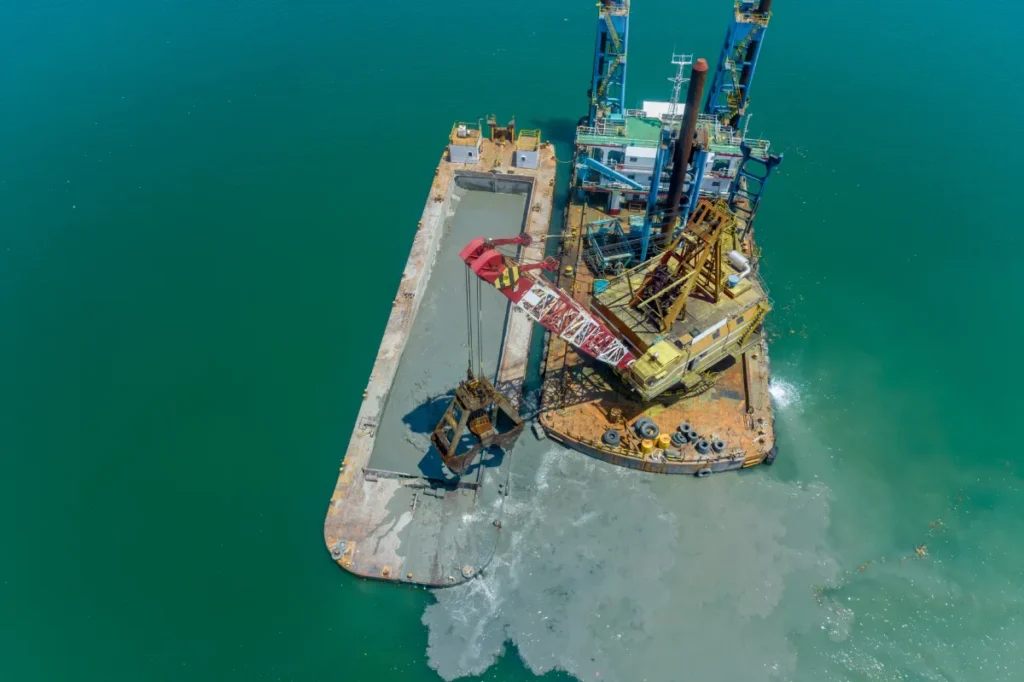
Before mobilizing a dredging machine to a construction or mining site, proper site preparation is essential to ensure efficient operations and avoid delays. Whether it’s a cutterhead dredge or a submersible slurry pump, most industrial dredge rental deployments require specific conditions and infrastructure to be in place. Rental providers may offer technical assistance during the planning phase, but it is the client’s responsibility to verify that the worksite can support the dredging equipment safely and effectively.
Key requirements for site readiness include:
- Access for deployment: Ensure that roads, ramps, and waterways allow for the safe delivery and movement of equipment and support vehicles, or cranes as needed.
- Power supply: Depending on the dredge type, the site must have either a reliable electric source or the setup for hydraulic power units (HPUs) and fuel storage.
- Safety protocols and permits: Confirm that necessary permits (environmental, discharge, excavation) are secured and jobsite safety measures are in place, including PPE and access restrictions.
Recommended add-ons and accessories to consider during the rental process:
- Booster pumps: Required for long-distance slurry transport or high-elevation discharge locations.
- Discharge hoses & floats: Durable hoses and modular float systems to route material discharge safely across water or terrain.
- RTK GPS or sonar units: For precision dredging in critical areas, especially where depth control or mapping is needed (e.g., pit walls, foundation zones).
Selecting the right support equipment not only improves dredging accuracy and efficiency but also reduces downtime and unnecessary wear on the main dredge system. Preparing for these requirements in advance helps align on-site logistics with the capabilities of the rented dredging machine.
Rental Models and Pricing Structures Explained
Choosing the right industrial dredge rental plan depends not only on the type of dredging machine but also on the duration of the project, its scope, and the operational budget. Rental providers typically offer a range of flexible models designed to suit short-term mobilizations, medium-duration contracts, or long-running industrial projects. Understanding these models helps contractors and project managers make informed decisions that align with both technical and financial expectations.
Below is a comparison of common dredge rental models:
| Rental Model | Ideal For | Billing Type |
| Daily Rental | Emergency dredging, urgent repairs | Per day |
| Weekly Rental | Short-term construction projects | Per week |
| Monthly Rental | Large-scale mining or basin works | Per month |
| Long-Term Lease | Ongoing operations across seasons | Custom contract |
What’s typically included in the rental package:
- Dredging machine (based on selected model)
- Standard maintenance and support during the rental period
- Operator training or documentation, depending on contract terms
Optional services and equipment available at extra cost:
- Certified operators or field technicians
- Booster pumps and discharge accessories
- GPS/sonar positioning systems for precision dredging
- Transport, mobilization, and demobilization support
Pricing is typically influenced by factors such as dredge size, required discharge capacity, depth of operation, terrain accessibility, and whether customization or auxiliary systems are required. Rental contracts may also include minimum duration clauses, usage limits, and damage waivers—so it’s important to review terms carefully and plan equipment runtime to avoid overages.
Rental flexibility allows companies to scale dredging capabilities up or down based on demand, without being locked into long-term asset ownership or maintenance overhead.
How to Evaluate a Reliable Dredge Rental Provider
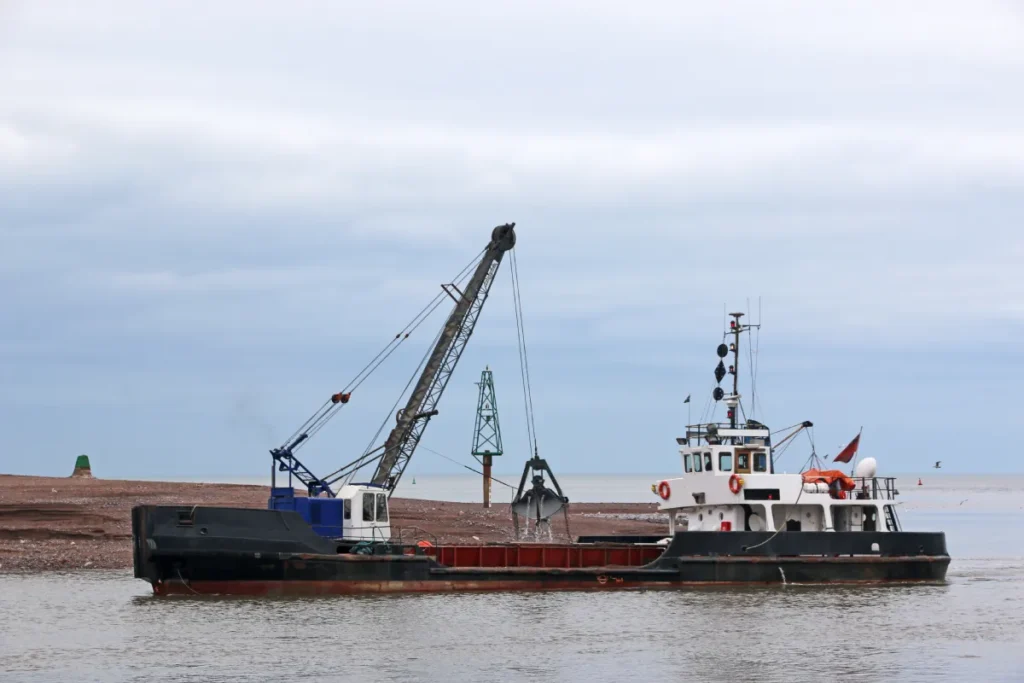
Selecting the right dredging machine rental partner is just as important as choosing the equipment itself. A dependable provider not only offers well-maintained, industrial-grade dredging machines but also backs them with responsive support, clear terms, and site-specific guidance. In high-stakes construction and mining environments, equipment downtime or technical delays can quickly translate into lost productivity and increased costs—making provider reliability a critical success factor.
Here are the key criteria to evaluate when comparing industrial dredge rental providers:
- Equipment Readiness and Uptime Guarantees
Look for providers that offer documented maintenance records, low failure rates, and a commitment to replacement units in the event of issues during operation.
- Industry-Specific Experience
Choose a rental company with proven experience supporting projects in construction, mining, aggregate processing, or reservoir dredging—ensuring they understand the operational nuances of these industries.
- Fleet Variety and Customization Options
A strong provider offers a range of dredge types and sizes, along with modular add-ons such as booster pumps or GPS systems, to tailor the setup to your specific site.
- Logistical Support and Rapid Deployment
Verify whether the provider offers assistance with transportation, on-site setup, operator training, or local compliance requirements.
- Responsive Service and Technical Support
24/7 availability for technical issues, remote diagnostics, and quick parts dispatch are key differentiators, especially in remote or critical projects.
- Transparent Contracts and Cost Breakdown
Ensure the provider offers clear terms on billing, damage liability, included services, and optional upgrades—avoiding hidden fees or post-rental disputes.
Working with a trusted industrial dredge rental provider means fewer delays, higher machine performance, and a smoother execution timeline. It’s essential to initiate early communication to align expectations and confirm availability for your specific project window.
Common Mistakes to Avoid When Renting Dredging Equipment
Renting an industrial dredge can provide major operational and financial advantages—but only if the process is handled correctly. Overlooking key technical or logistical factors often leads to project delays, underperforming equipment, or unexpected costs. Whether you’re a contractor handling construction site dewatering or a mining operation managing slurry transport, it’s essential to avoid common pitfalls when planning your industrial dredge rental.
Here are the most frequent mistakes to watch out for:
- Not confirming material compatibility
Renting a dredge without validating its suitability for the specific material type—such as compacted clay, rock-laden overburden, or fine silt—can severely impact efficiency or damage the equipment.
- Underestimating required pump capacity
Selecting a machine with an insufficient flow rate or discharge head (TDH) for the site layout can result in clogged lines, incomplete dredging, or longer runtime.
- Ignoring site access and setup logistics
Failing to prepare proper launch areas, power connections, or transport routes may delay deployment and add unexpected costs during mobilization.
- Skipping pre-rental inspection or training
Overlooking a hands-on walkthrough or operator briefing increases the risk of operational errors, missed safety steps, or misuse of critical components.
- Not planning for discharge routing.
Inadequate hose lengths, missing floats, or incorrect pipe fittings can disrupt slurry transport, leading to downtime.
- Delaying permit acquisition
Environmental or municipal permits are often required for dredging. Waiting until the equipment arrives to secure documentation can halt progress.
- Overlooking wear part availability
In remote or extended deployments, failing to secure extra impellers, liners, or hose clamps can result in unnecessary stoppages if a part fails during operation.
Avoiding these issues starts with proactive planning, open communication with the rental provider, and a clear understanding of your site’s technical demands. Proper preparation ensures you get the most out of the rented dredging machine and keep your operation on schedule.
Conclusion: A Smarter Way to Scale Industrial Dredging
Renting the right industrial dredge can make a measurable difference in project efficiency, cost control, and timeline reliability—especially in high-demand environments like construction and mining. By understanding the available equipment types, preparing your site correctly, and choosing a qualified rental provider, you can maximize output while avoiding common pitfalls. At CA Dredge Pros, we specialize in providing industrial dredging solutions that meet your job site’s unique requirements. Whether you need short-term equipment or long-term support, we’re here to help you get the job done right. Contact us today to discover more about our rental fleet and service capabilities.


